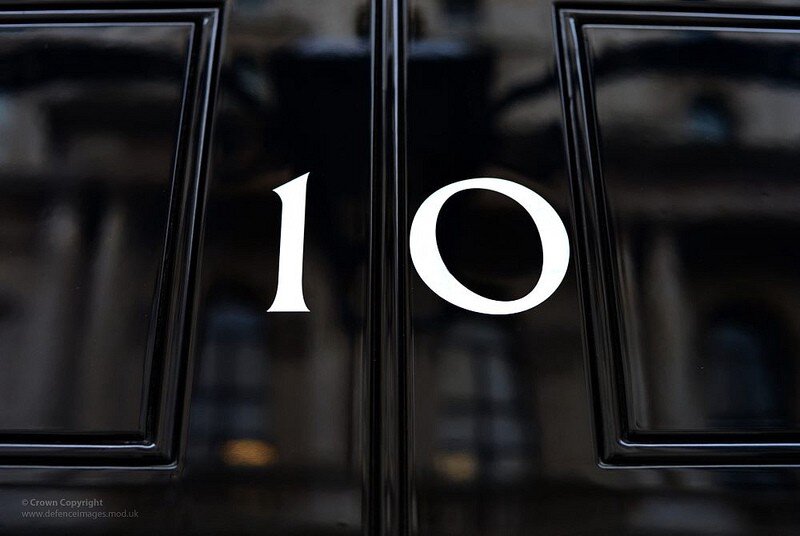The magic 10 percent is a really good guide to remind you of the essential minimums.
Ten percent of your time.
You need to be spending a minimum of ten percent of your time on business development — and that means pro-actively getting new customers. If you’re a one-man band, assuming a five-day week, that means half a day a week, every week. If you make spoons, down tools and make no spoons on a Tuesday morning. Sell them.
Answering emails or posting picture of a spoon in your noodle lunch on Instagram isn’t selling. Brand awareness and community building are essential, but unless they are leading quickly to sales they don’t count to this particular ten percent.
If you have ten staff at least one of them must be a dedicated, full-time sales and marketing pro who doesn’t get a noodle lunch unless they’re bringing in new business.
Set a time in your diary, repeating every week, that is sacrosanct and unmovable. Even an urgent shipment of Gucci spoons for a celebrity soup kitchen can, and must wait. As soon as you stop spending regular and constructive time, pro-actively growing your business, your business will stop growing.
Ten percent of your revenue.
You should spend a minimum of ten percent of your revenue on what used to be called marketing. If you turned over £100K last year you must spend at least £10K on measurable, effective ways to sell your shizzle. NB: Your spoon community and Instagram noodles might come into this, but most of that can be done for free.
To begin with — in your first year, on your own — you can count your own time/salary towards that ten percent. But not afterwards. When one becomes two or three it’s time to make sure you put that revenue to work, making more revenue.
Spend it wisely and count its impact carefully, but if you don’t spend it you can never hope to grow. If it doesn’t work that’s because you are not doing it right — it’s never because ten percent is too much.
For a sense of perspective, Red Bull spend over 40% of their revenue on marketing and you’ve probably heard of them. They sell over 5 billion cans of their liquid speed every year and it ain't because it tastes great. Ten percent is a minimum.
Ten percent of your audience.
Any experienced salesman will tell you that if you want ten sales you’ll need at least a hundred good leads. Ten percent is the minimum conversion rate you need and remember that every time you make a sale you need to set about finding another new lead.
Which begs the obvious question, what’s a good lead? Well, that differs depending what you’re selling and to whom, but the important thing to concentrate on is ensuring that you know everything you can about one hundred people who have heard about you, like what you do and are capable of buying from you.
Interact with them in the manner and media they like and make sure they’re happily compelled to buy as soon as they’re ready.
You need ten percent of your audience — on social media or on your email database — to buy from you and you’ll only get that if you are very smart about reminding them why they should and how they can.
Call it a sales funnel, call it a pipeline or call it the wine-press, but to keep a steady flow of good stuff coming out of the bottom, you need to put ten times more good stuff in the top. Stop adding grapes into the hopper and there’s soon no Sancerre for supper.
(Helpfully the Internet says it takes roughly ten bunches of grapes to make one bottle of wine. Et voila. 10%… A Vic Reeves kinda stat)
Ten percent is not enough.
After Simon Sinek has explained his Golden Circle in his famous TED talk, he talks about the ‘Law of Diffusion Innovation’ and it’s worth watching (probably again) for this point alone.
“if you want mass-market success or mass-market acceptance of an idea, you cannot have it until you achieve this tipping point between 15 and 18 percent market penetration, and then the system tips. I love asking businesses, “What’s your conversion on new business?” They love to tell you, “It’s about 10 percent,” proudly. Well, you can trip over 10% of the customers. We all have about 10% who just “get it.” [link]
If you’re an artisan spoon maker or a local accountancy firm, you might not need or want mass-market success but you do need more than the first ten percent to keep any business growing. All three of the ten percent’s I’ve described are the minimum you need. Remember Red Bull.
The magic ten percent is about planning, budgeting and focus but the key point of Simon Sinek’s talk is that people buy your passion and purpose before they buy your product.
Your passion and purpose, the way you go about your business — your ‘why I do what I do’ — is not something that you can do half a day a week, it’s a seven day a week 100% job for life. That’s the only way to really grow.
